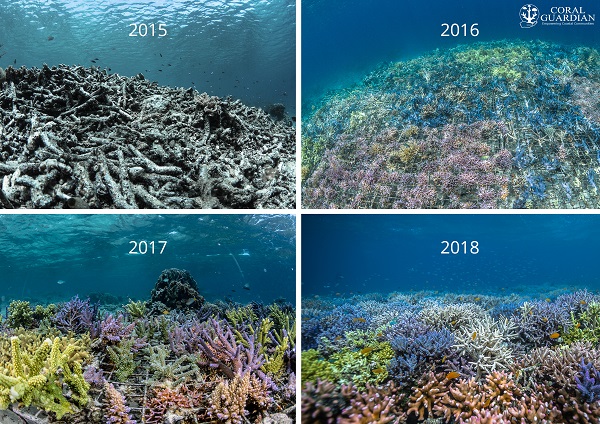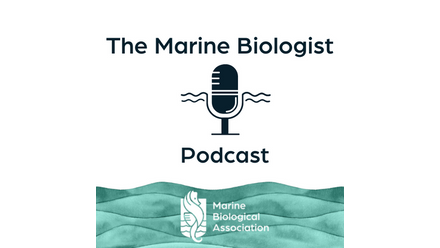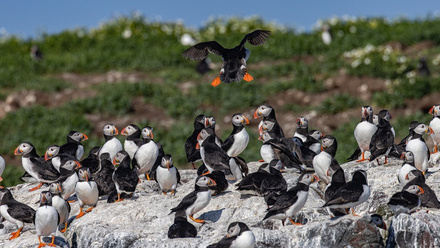Coral restoration in a warming world
Figure 1. (main image) Coral research in the Australian Institute of Marine Science’s Sea Simulator. Image © Australian Institute of Marine Science. Credit: Christian Miller.
The United Nations Decade of Ecosystem Restoration (2021–2030) is a clear sign that restoration is becoming a major priority on land; yet marine ecosystem restoration is contentious. Whilst land-based ecosystem restoration is well established, the science to restore our oceans’ health at scale is less developed. Critics claim marine ecosystem restoration is expensive, has a high risk of failure, and distracts the conversation away from tackling global climate change.
Until recent decades, marine management has focussed on passive restoration by reducing stressors that caused the damage. Actions such as managing destructive overfishing through marine protected areas, or coastal pollution through improved land management, have led to major improvements in some areas. Despite these actions, many valuable marine ecosystems continue to decline and active restoration is increasingly being seen as an economically viable management option. Usually, active restoration can only be successful once the drivers of decline have been reduced or eradicated. For example, hundreds of hectares of oyster reefs are being rebuilt in Chesapeake Bay, US, because they could not recover on their own after destructive dredging ended.
Coral reefs are some of the most threatened ecosystems on the planet. They support the livelihoods of at least 500 million people through activities such as fisheries and tourism, and are worth an estimated US$375 billion per year. Reductions in coral reef health have been recorded in all major tropical oceans since the 1980s, with an average of 30–50 per cent reduction in coral cover globally.
Global climate change is the key driver of coral reef decline from associated bleaching events, disease outbreaks, and ocean acidification from warming waters. The Intergovernmental Panel on Climate Change forecasted the world’s coral reefs would decline by a further 70–90% with a 1.5°C increase in global mean temperature. Recent bushfires, flooding, and coral bleaching are clear signs that climate change is impacting at scale. With climate models predicting that even if we stop all emissions of greenhouse gases today, warming will continue for decades, then why invest in coral restoration (see Box 1) if the stressor, climate change, has not been removed?
Recently, an international team of scientists looked at 362 cases of active coral restoration methods from 56 countries across four decades. Their study showed that over 200 different species of corals have been used and survival of restored corals was relatively high, between 60 and 70 per cent, demonstrating that it is possible to successfully grow corals at smaller scales. The research team also identified common issues in projects including a lack of clear and achievable objectives, or appropriate, standardized monitoring and reporting, along with many projects that were poorly designed in relation to their stated objectives.
Box 1. What is coral restoration?
The earliest coral restoration projects involved direct transplantation of coral colonies, often away from areas of development such as pipelines. In the 1980s, coral gardening projects where coral fragments were grown in an intermediate nursery phase began. This allowed for a multiplication of fragments as corals could be grown and fragmented many times before outplanting. More recently, new methods to encourage coral recovery have been trialled. In Hawaii, teams of divers have been removing over-growing, invasive seaweed with the help of an underwater vacuum. In the Philippines, coral spawn has been captured and reared until ready to settle, with millions of larval corals then added to degraded reefs. In Indonesia, the pet food and confectionary company Mars, Incorporated has developed ‘reef stars’; frames that are linked together and seeded with corals to consolidate areas of coral rubble.
Despite some of the recurring challenges in coral restoration projects, some nations are investing in coral restoration in a major way. In Australia, the federal government—through the Reef Trust Partnership—has invested close to AU$100 million into the Reef Restoration and Adaptation Program, seeking to scale-up and accelerate reef restoration and adaptation science to help protect the Great Barrier Reef (Figs. 1 & 2).

Figure 2. Larvae are settled onto 3D printed shapes in the laboratory, and the shapes are then wedged into areas of the reef lacking live coral. Deployment shown here on the Great Barrier Reef. © Australian Institute of Marine Science / Andrea Severati SECORE.
The initial scoping and design phase has been completed and seven categories of interventions have been identified for the next five years of research and development (Box 2). These interventions include ways to protect corals by reducing their exposure to extreme temperature stress by making environmental adjustments that, for example, increase shade or cool the water. It could also include assisting coral populations to more rapidly build natural resilience to threats such as higher temperatures, through measures such as selective breeding or genetic engineering. Other interventions aim to accelerate natural recovery, for example, modifying reef surfaces to promote growth (Fig. 3), and producing and distributing coral larvae on a large scale (Fig. 4).
Box 2. Types of interventions being investigated through the Reef Restoration and Adaptation Program
- cooling and shading – reducing exposure of coral reefs to heat and light stress during acute events
- stabilization – adding reef structures and stabilization measures to facilitate coral recovery following disturbances (see Fig. 3)
- coral seeding – using natural coral larvae to enhance coral reproduction and reef recovery following disturbance
- biocontrol – managing coral predators and competitors to enhance coral survival
- field treatments – increasing coral survival and health following disturbance with probiotics, feeding, medicines or other treatments
- seeding with enhanced corals from existing stock – seeding reefs with corals from existing stock that have enhanced performance, to increase coral health and tolerance
- seeding enhanced corals bred from engineered stock – seeding reefs with corals that have enhanced performance derived from synthetic biology and gene editing approaches, to increase reef health and tolerance.

Figure 3. Coral reef restoration using artificial reef structures: three-year time series of coral growth on coral tables in Pulau Hatamin, Indonesia. Photo by Martin Colognoli for Coral Guardian.
In the US, the National Oceanic and Atmospheric Administration (NOAA) and partners have developed an unprecedented, decades-long approach to restore seven iconic reef sites in Florida Keys National Marine Sanctuary. The project, Reef Icons, involves removing nuisance and invasive species, like seaweed and coral predators, before a rebuilding programme that includes planting clusters of a range of coral species, followed by the addition of urchins and crabs to keep seaweed under control.

Figure 4. Larval restoration trials in the Great Barrier Reef. Image © Ross Miller.
Alongside these government-led initiatives, the Coral Restoration Consortium (CRC) is a rapidly growing network of coral restoration groups. The CRC is a 6,000-strong community of practice comprising scientists, managers, coral restoration practitioners, and educators with a focus on knowledge sharing and collaboration. A new report from the United Nations and the International Coral Reef Initiative (ICRI) found that nine ICRI member countries currently have or are developing best practice and policy guidelines for coral restoration projects. The average annual spend of ICRI members on coral restoration ranged between US$30,000 to US$1 million. These numbers are dwarfed by the amount that could be lost if reefs continue to degrade. A UN report estimates that if reefs continue to decline, their annual value could fall by US$3.1 billion in Mesoamerica and US$2.2 billion in the Coral Triangle by 2030, adding that measures to address this decline, from large and cost-effective investments in coral reef conservation and restoration will be necessary.
Where next for coral restoration?
This year and the next will be significant for coral reef conservation and restoration. In the political sphere, the implementation of the Paris Accord is hoped to reduce global carbon emissions whilst Australia and the US lead the way in reef restoration science, supported by the UN Decade on Ecosystem Restoration.
The UN Decade aims to massively scale-up restoration to combat the climate crisis and enhance food security, water supplies, and biodiversity. Most of the focus will be on land, through actions such as replanting trees. These efforts will help marine ecosystems in three ways. First, many coastal ecosystems are damaged by muddy water and pollution from degraded agricultural land, and this will be reduced if there is more plant cover. Second, restoring coastal wetlands and replanting mangrove forests will improve local water quality as they filter runoff from coastal land. Third, restoration could remove up to 26 gigatonnes of greenhouse gases from the atmosphere, helping to combat climate change, the most important threat for marine ecosystems such as coral reefs.
So what is the role of coral restoration in a warming world? First, whilst decades of warming are ‘baked in’, coral restoration and adaptation could help preserve more coral stock and biodiversity to help corals recover once, or if, temperatures stabilize. Second, in many areas such as popular tourism locations, local reefs are so valuable that it justifies the high cost of restoration. Third, all new science and innovation is contentious, but coral restoration allows for citizen scientists, divers and people who care to get involved in helping, and therefore gives hope. Lastly, coral restoration has largely been driven by passionate tinkerers, and involving high-technology and large investments into research and development offers opportunities for new solutions.
Some critics worry that an increasing focus on restoration will distract from meaningful action on climate change, and this is a valid concern. Without meaningful and rapid action to reduce greenhouse gas emissions the future for coral reefs is bleak. Conversely, by focussing so much on climate change as the driver of coral decline, there is a danger that decision-makers will give up on other actions to improve coral reef health, such as improving local water quality because they think reefs are doomed anyway.
The upcoming decade will be critical for the world, and for coral reefs. We are responsible for the destruction of much of the world’s natural wealth in just a few lifetimes. Embracing the UN Decade on Ecosystem Restoration on land and at sea, along with urgent action to reduce greenhouse emissions, is an opportunity to turn the tide so the next generation can also experience the world of wonder we have had the privilege to enjoy.
Dr Ian McLeod (ian.mcleod@jcu.edu.au) and Dr Maxine Newlands (maxine.newlands@jcu.edu.au) at TropWATER, James Cook University, Australia.
Further reading
McLeod I.M. et al. (2019). Mapping Current and Future Priorities for Coral Restoration and Adaptation Programs. 44 pages. Available at www.icriforum.org
Boström-Einarsson L. et al. (2020) Coral restoration – A systematic review of current methods, successes, failures and future directions. PLoS ONE 15(1): e0226631. https://doi.org/10.1371/journal.pone.0226631
Reef Restoration and Adaptation Program website https://www.gbrrestoration.org/
Restoring Seven Iconic Reefs: A Mission to Recover the Coral Reefs of the Florida Keys https://www.fisheries.noaa.gov/southeast/habitat-conservation/restoring-seven-iconic-reefs-mission-recover-coral-reefs-florida-keys



